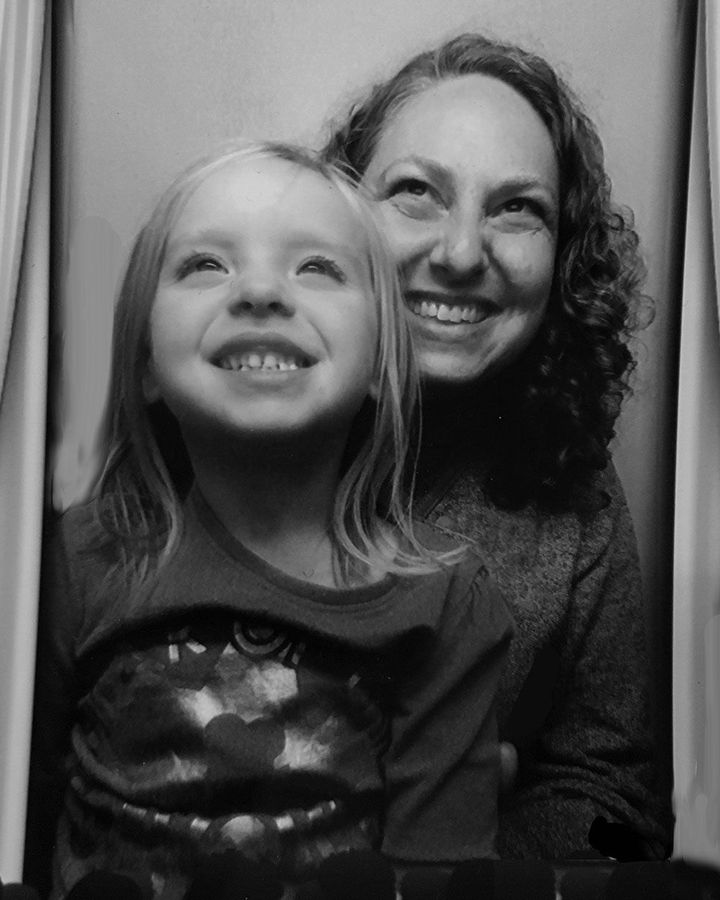
How mums are finding flexible jobs
For most of her professional life, Becky White wouldn’t have considered leaving her role as a marketing executive for part-time work. She loved her job, and was proud of the career she’d built. But a couple years ago, when she had her second child – a baby boy, whom she knew would be her last – she had a change of heart.
US-based White, who with her husband, has a blended family of four kids, began exploring ways to downshift professionally and spend more time at home. “I was hesitant to hit pause,” she recalls. “I had a lot of angst and hesitation about voluntarily stepping out of the workforce. I wanted to maintain my identity and trajectory as a working person.”
Through online research, she came across The Mom Project, a platform linking women to full- and part-time flexible job opportunities, and realised there might be a way she could spend more time with her baby and keep working. White quickly secured a part-time role as a digital marketer for a skincare brand, and later took on other contract jobs at different companies, all of which she found through the platform. The hours for each were flexible; as long as she met her goals, no-one cared when or where she worked, she says.
Recently, White, who is in her early 40s, decided the timing was right to go back to work full-time. She now works from home as the director of marketing at a technology company in Pittsburgh, US. She attributes her part-time stints as instrumental to helping her return without missing a beat. “I had the benefit of these experiences, which allowed me to more easily transition back,” she says.
As more women and caregivers seek to balance their professional and family priorities, some American workers are looking to digital talent platforms like The Mom Project and The Second Shift to find flexible opportunities. Although some have been around for a few years, they are growing faster than ever, presenting a big opportunity for caregivers, who represent nearly three-quarters of the workforce in the US. Similar platforms exist around the world in countries including the UK and Australia.
The trend is part of a broader post-pandemic shift in which workers are taking control of their work-life balance, and crafting careers that suit their individual needs, goals and phases of life.

“Women approach their careers holistically,” says Tami Forman, the founder of Path Forward, a non-profit that sets up mid-career internships for professionals who’ve taken time off work for caregiving responsibilities. “They understand that at different life stages, they may want or need to pull back and then step on the gas again. Unfortunately, there’s not a lot of cultural scaffolding to help women do that. So, any organisation that can keep women in the workforce in some way and make it easier for them to come back as if they never left has a lot of value.”
Research shows that women who leave the workforce to care for children not only face difficulties returning to paid work, but also pay a steep price in terms of their lifetime earnings. Now, these talent platforms, which have grown since the pandemic, offer a potential avenue to challenge those norms and remove barriers to re-entry, enabling women and caregivers to pursue careers without sacrificing their family responsibilities.
Still, experts say their popularity underscores the troubling reality that many employers continue to fall short when it comes to creating truly flexible workplaces. Can these platforms provide a sustainable solution – or are they a plaster over a deeper problem?
A paycheque and a social identity
The pandemic placed a heavy burden on working mothers. Record numbers of them left the workforce, driven primarily by the growing demands of caregiving responsibilities – a problem particularly pronounced in the US. Meanwhile, industries traditionally dominated by women – including education, nursing and hospitality – endured the brunt of job losses during lockdowns and social-distancing measures.
Today, however, the picture looks somewhat brighter. The number of women participating in the workforce has reached an all-time high, with the most significant rise among mothers of young children. According to a report from the Hamilton Project at the Brookings Institution, more than 70% of women with children younger than five are in the workforce, up from 68.9% pre-pandemic.
The surge in remote work is a driving force behind this change, largely for knowledge-work roles. Yet many mothers and caregivers seek a level of flexibility that goes beyond just working from home. They might need the ability to do school pick-ups mid-day, or attend to other family-related tasks. And they might also want to work non-linear hours, rather than a strict nine-to-five schedule.
This growing realisation has helped fuel the growth of talent platforms catering to caregivers. This year alone, The Mom Project, for instance, garnered 400,000 new sign-ups; the company says its user base totals more than 1.5 million.

The Second Shift’s community of users has also grown tremendously over the past three years, says the company. During the pandemic, The Second Shift began hosting free webinars for members to address the toll of mental, emotional and invisible labour on working women and parents. It’s since incorporated a content platform including social media, a YouTube channel and a podcast.
The mothers and caregivers drawn to these platforms seek accommodating work not only out of financial necessity, but also because of their professional ambitions to remain in the workforce, says Laura M Little, professor of management at University of Georgia’s Terry College of Business, US. “They need to bring in money, and they want to maintain a social identity outside of their identities as mothers.”
Both mums and their employers stand to benefit from this development – especially in the short-term, says Little. Employers gain access to highly skilled workers who may have been previously overlooked, thereby diversifying their talent pool. Women, meanwhile, keep their skills sharp. “And they get to have ownership over what they’re doing and when they’re doing it – without having to work full-time when they either don’t want to or can’t,” she says.
Julie Teninbaum, a Gen X graphic designer based outside Boston, found her first freelance opportunity with The Second Shift in 2016, when her children were four and two. The project, which involved creating infographics for a major tech company, paid $20,000 (£16,360).
Getting that job made all the difference to her career as a freelancer, she says: “It made me feel like I could keep going, even when life was chaotic and I was fitting in my work between diapers and nap times.”
Teninbaum’s children are older now, and her work hours follow the school schedule. She says her earnings are roughly what she’d be making if she worked full-time at a company. During the past several years, she’s built up her network of clients, including some that she found through recruiters at The Second Shift. “They’ve been supportive – I feel like they’re looking out for me and helping me get jobs.”
Employers have a role
Although these platforms have been a game-changer for many women looking to balance their professional lives with their caregiving responsibilities, some experts worry about their potential long-term effects. The fear largely is rooted in the prejudices inherent in the current workplace structure. Women who opt for part-time or flexible roles may face limited prospects for advancement and lower salaries compared to their full-time counterparts.

Workers often pay the price for flexibility, says Ellen Ernst Kossek, a professor of management at Purdue University’s Mitchell E Daniels School of Business, US. She says research that points to real or perceived flexibility stigma. Some managers harbour biases about employees who work flexibly, viewing them as less committed and less productive, compared to their colleagues who work traditional hours.
While these solutions help satisfy the immediate need for flexible work among carers, they also highlight the fact that most employers lag in efforts to make jobs more manageable and workplaces family friendly.
“They’re not addressing the limited supply and high cost of childcare, and they’re still making an assumption that mothers will mostly pick up the slack,” says Kossek. “I’d rather have these platforms exist than not be here – they give women the flexibility they need – but the employers are getting off easy. Longer term, they’re not a solution.”
However, they may be partof the bigger solution.
Pre-pandemic, US financial-services company Synchrony, whose workforce is predominately female, had been very traditional, says DJ Casto, the firm’s chief human resources officer. “Most everyone worked in the office, and we spent way too much time debating whether a role could be work-from-home.”
In 2020, the company made a $1.5m (£1.23m) investment in The Mom Project, and also hired a number of employees through the platform. Working in partnership with The Mom Project through Covid has been eye-opening, says Casto. Synchrony has since introduced a range of flexible work options, enabling employees to decide where and how they work. It also frequently surveys its workforce to ensure the company is providing the most relevant benefits.
“If you want to differentiate and attract and retain diverse talent – especially women and caregivers – we’ve learned that you need to radically rethink the old school way of how people are getting work done,” he says.
However, unless there is a massive shift in employer sentiment, there will continue to be a need for platforms and organizations that support caregivers at various stages of their careers, according to Forman of Path Forward. Helping people find creative ways to balance their careers while caring for their children is crucial, she says. “All things being equal, the financial impact of leaving the workforce is tremendous.”
Becky White, the marketing director, says she’s grateful The Mom Project gave her the opportunity to have essential time with her infant, while also staying active in the workforce. “For me, it was about striking a balance,” she says. “I wanted to keep working and maintain my identity, but I also wanted to be a more hands-on mom.”



